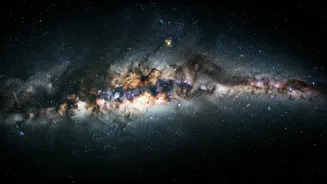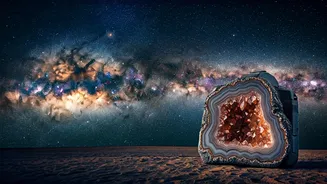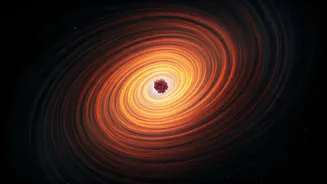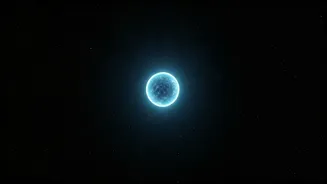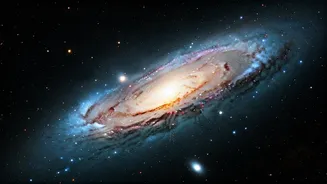Ancient Rocks' Secrets
The quest to determine the universe's age began with earthly clues. Scientists, by analyzing the radioactive decay of elements found in the oldest rocks
on Earth, such as uranium and thorium, were able to get a glimpse of the timeline. These rocks acted as a sort of a clock, offering clues about the age of our planet. The process involved understanding the half-lives of these radioactive elements, which allowed them to calculate when these rocks first formed. By comparing the ratios of the original and the decayed elements, they could estimate the age of the rock. These findings offered an initial, although limited, understanding of the universe's age. This data helped the scientists to develop a method of dating other objects. Their findings were instrumental in setting the initial stage for the deeper cosmic insights that were soon to follow.
Stellar Evolution Uncovered
Advancements in understanding stellar evolution gave scientists another way to determine cosmic ages. By observing the life cycles of stars, scientists realized that the formation and evolution of stars could be used as cosmic clocks. Stars are born, evolve, and eventually die, each stage leaving behind a specific signature. Their lifecycle from hydrogen fusion to heavier elements provided crucial data. Scientists focused on the oldest stars in the Milky Way galaxy, like those found in globular clusters. These clusters contain stars that formed at roughly the same time. By studying the color and brightness of these stars, they could determine their age using computer models of stellar evolution. As a result, the lifespan of these stars served as an effective tool. Therefore, these studies provided another layer to the quest of discovering the universe's age.
Hubble's Constant Insight
The discovery of the expanding universe was a game-changer, thanks to Edwin Hubble's observations. Hubble's Law states that galaxies move away from us at speeds proportional to their distance. This observation led to the concept of the Big Bang, where the universe began. By measuring how fast galaxies are receding and how far away they are, scientists could calculate the Hubble Constant. This constant is used to estimate the age of the universe. A higher Hubble Constant means the universe is expanding faster, suggesting a younger age. However, early measurements of the Hubble Constant produced inconsistent results, which led to uncertainties about the universe's age. This constant became a critical parameter in understanding the cosmic timeline, as it provided a crucial connection between the universe's expansion rate and its age.
Cosmic Microwave Background Data
The Cosmic Microwave Background (CMB) provided key data in the age estimation process. The CMB is the afterglow of the Big Bang, consisting of microwave radiation left over from the early universe. Scientists used data from satellites like COBE, WMAP, and Planck to measure the CMB's temperature fluctuations across the sky. These fluctuations contain information about the universe's composition, geometry, and age. The CMB data allowed scientists to refine their estimates of the Hubble Constant and other cosmological parameters. This enabled the scientists to get the precise age of the universe. By studying the patterns in the CMB, scientists could determine when the first stars and galaxies formed. The CMB became a vital tool for understanding the universe's origins and evolution, thereby enhancing our comprehension of cosmic history.
Putting It Together
Bringing together all these methods led to a more accurate understanding of the universe’s age. Scientists started with the clues from old rocks, understood the stellar evolution to refine it further. They combined data from the Hubble Constant with detailed information from the CMB to refine the estimates further. This multi-pronged approach allowed scientists to cross-validate their findings, increasing confidence in their conclusions. Each technique acted as a check on the others, providing a holistic view of the universe's history. The collaborative process, across multiple disciplines, resulted in a fairly consistent understanding of the age of the universe: currently estimated to be around 13.8 billion years. This estimate continues to evolve as scientists gather more data and refine their models. But the journey through the cosmic timeline has been a testament to human ingenuity.
